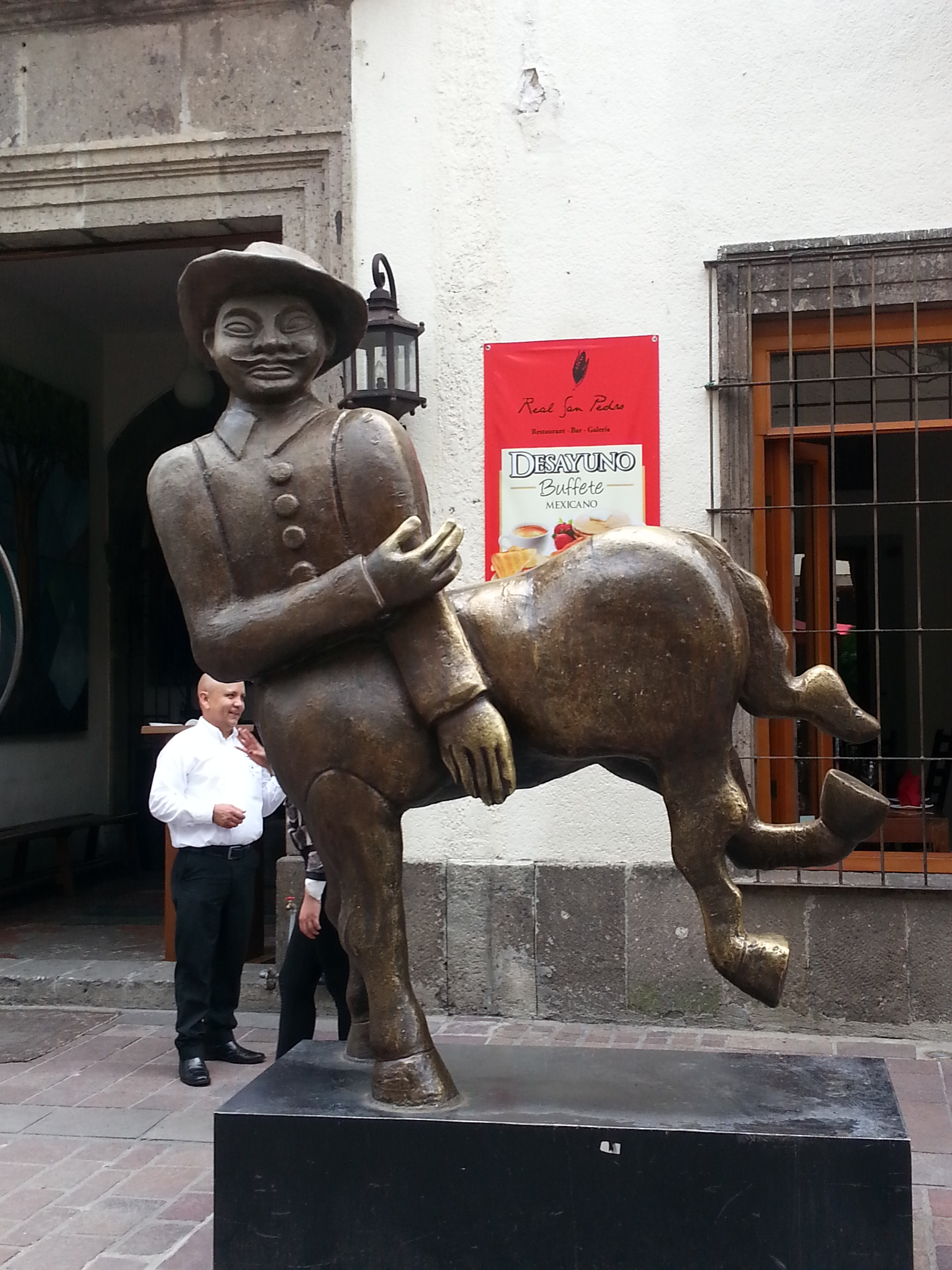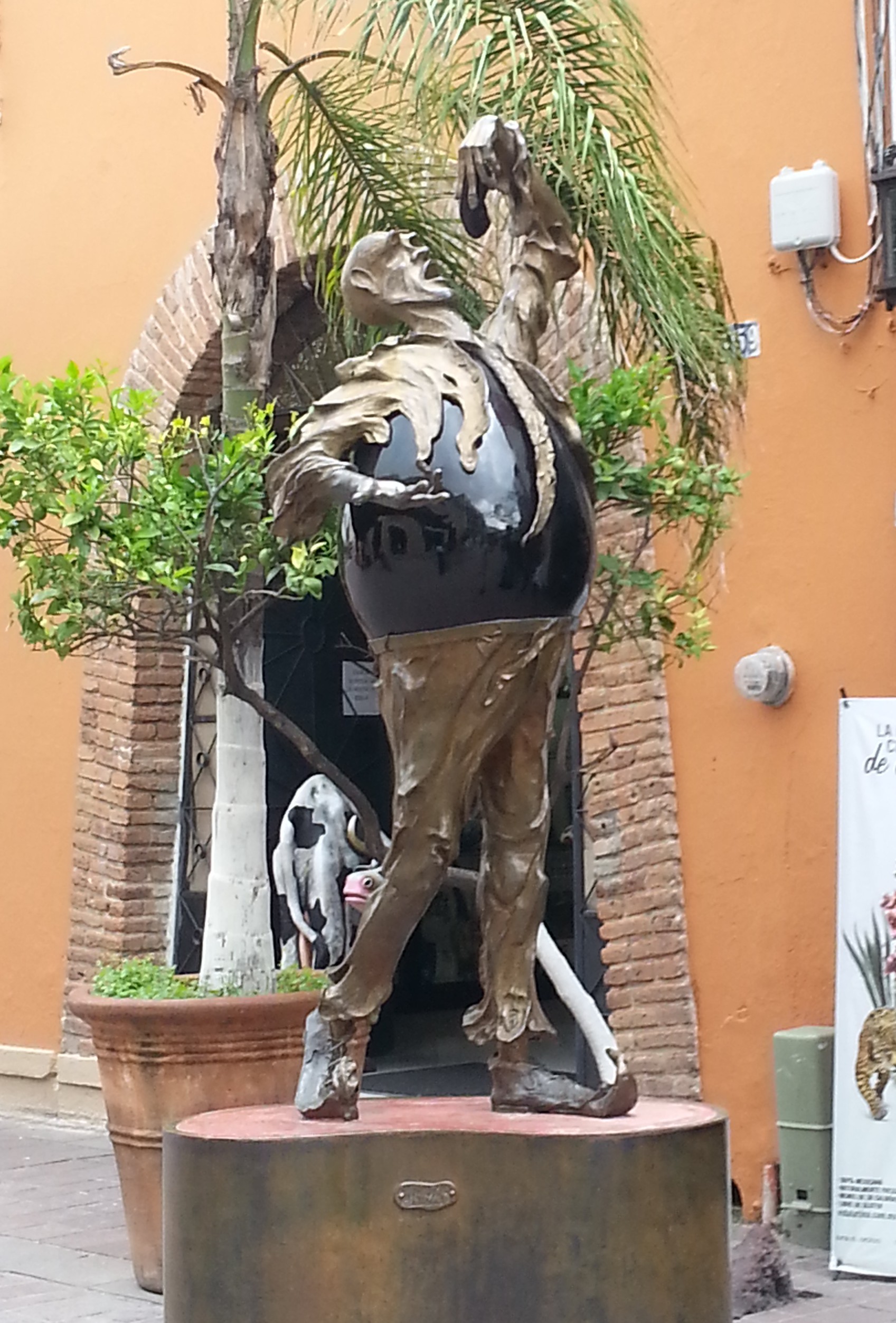 I recently had the pleasure of visiting part of my husband’s family in Jalisco, Mexico. It was my first real trip to Mexico (stopping on a cruise ship doesn’t count) so I didn’t know what to expect. I had serious anxieties about meeting and communicating with family because my Spanish has degraded since my time in Peace Corps Paraguay. Safety concerns constantly loomed in the back of my mind. There was one place that made me forget all of that, Tlaquepaque.
I recently had the pleasure of visiting part of my husband’s family in Jalisco, Mexico. It was my first real trip to Mexico (stopping on a cruise ship doesn’t count) so I didn’t know what to expect. I had serious anxieties about meeting and communicating with family because my Spanish has degraded since my time in Peace Corps Paraguay. Safety concerns constantly loomed in the back of my mind. There was one place that made me forget all of that, Tlaquepaque.
The beautiful artisan town is what I imagine that all of suburban Guadalajara was like before global competition and drug wars; it’s the Guadalajara that my mother-in-law describes: a lively town with brightly painted buildings, tons of locally-owned shops and restaurants, local artwork along the walkways, delicious food carts in the plazas, plenty of history, and a laid back atmosphere. Tlaquepaque is an old school haven tucked away from the bustling metropolitan that surrounds it.
Tlaquepaque is undoubtedly a tourist town, though certainly not a tourist trap. It’s the upscale version of Tonalá, a marketplace for artisan goods. Shops for clothing, jewelry, artwork, furniture, and leather works speckle the main roads around Jardín Hildago. I loved pretty much everything that I saw mainly because I have a weakness for handmade goods. The amount of patience, focus, and skill needed to create anything by hand is admirable. The amount of detail seen in the intricately beaded accessories and embroidered blouses made my heart warm. Each piece was perfectly unique, with just the right amount of “flaws” to tell that it’s handmade with love. Give me all the monies so that I can buy all the things!

Hand-carved wooden furniture from Mexico is in a class of its own. I first encountered it at an Atlanta restaurant and store called No Más Cantina. Single tree trunks were transformed into benches, headboards, and tables. Some were sustainably harvested, others weren’t (unfortunately) but all were stunning examples of an artist’s dedication to the craft. I generally want to buy everything in No Más, too.
Seeing similar pieces in Tlaquepaque made me wish that I was a millionaire so that I could at least afford something! We saw a beautiful weathered headboard–a single piece with a beautiful grain, maybe eight feet long and four feet tall– that was $14,000 USD. The table that I fell in love with was $35,000. The base was the top portion of a tree trunk just before it separates into branches. Cut horizontally, the branch bases served as the foundation for the glass table top. If I had $40G to spare I would’ve bought it on the spot and shipped it home.
But I didn’t. And the store was so nice that I didn’t feel comfortable taking pictures. I got nothing but memories. Great memories, at least.
Sights and Eats
Jardín Hildago isn’t very grand but I remember it vividly because of the tall pole rising from its center. I’m told that the pole is used once a year for a festival. Four men, Los Voladores, are suspended by cords from a small turning platform on top of the pole. They twirl, flying through the air like Disney teacups. Historically, the dance was started by a mesoamerican tribe in another part of Mexico as a petition to the gods to end a drought. No one in my party remembered why they started to do it in Tlaquepaque.
We had breakfast at El Patio. This place is not a book to judge by its cover. The entrance is nothing spectacular but once you walk through the foyer the restaurant opens into a beautiful courtyard with a fountain of water and fresh flowers at its center. We were seated near a playground (yes, there is a tiny playground in the courtyard, too) and started off with the most delicious cup of coffee in existence. I don’t even know how I liked coffee before I tried it. Cafe de olla con piloncillo changed my life.
Cafe de olla is just coffee brewed in a pot, traditionally a clay pot. This alone presents a good cup of coffee when the beans are fresh. Add piloncillo, however, and you might just have an outer body experience. Sugar cane provides the base for piloncillo, accentuated with cinammon, anis, orange zest and other flavors depending on the maker or the brand. It was warm, flavorful, and sweet. Perfect coffee.
I didn’t know it would be so terrific, so for the first cup I added a bit of milk. I was about to grab the sugar when my aunt-in-law discreetly gave me the side-eye. She wasn’t going to tell me not to but…I stopped. I sipped it. It didn’t need the milk. It didn’t need anything. I drank the next two cups black.
While the coffee stole the show, everyone enjoyed their meals as well. Authentic and fusion dishes served with tourist industry hospitality. More perfection.
For lunch, we stopped by El Parian, more specifically, Paco’s. El Parian is a plaza that was turned into a performance space surrounded by restaurants. All of the restaurants have the same seating arrangements and furniture so it’s hard to tell them apart. Each restaurant’s name is written on the chair, which is the only way to know where you’re eating.
 I don’t recommend Paco’s. It was the first imperfection of the excursion, haha. The only food that I liked was my husband’s queso and chorizo dip. Try another restaurant in El Parin. There are plenty of them.
I don’t recommend Paco’s. It was the first imperfection of the excursion, haha. The only food that I liked was my husband’s queso and chorizo dip. Try another restaurant in El Parin. There are plenty of them.
El Parin gets a million points for atmosphere. Mature trees grow among the seating area, reaching their thick boughs into the open air above. Bamboo lanterns hang from the trees.
The entertainment is pretty good, too. There are at least four mariachi bands making rounds to serenade guests. The focal point of the space is a covered performance pavilion. It’s circular, which could make for an odd view for some guests, but the music resounds throughout the space. Lunchtime was quiet with the exception of the bands but I imagine this place is pretty awesome in the evenings during live performances.
Overall, Tlaquepaque is the perfect tourist town with the right amount of local charm and international conveniences for travelers.
Travel Tips
- Check the tags; while many pieces are “hecho en Mexico,” I did find one shop that slipped in products from outside of the country.
- Bring money for public restrooms, usually $3-5 pesos.

- Double check your mode of transportation the day of travel. Bus routes are cancelled or rerouted during construction and events. Since it’s a tourist area, there are plenty of events.
- If you get a car, look closely for parking areas tucked underground or between buildings. They’re hard to spot.
- Drink bottled beverages or alcohol. Avoid the ice.
- Everything in Tlaquepaque is notably more expensive than elsewhere in the city but you are getting what you pay for. The quality is great. You can find cheaper variations in Tonalá but the quality there is inconsistent.